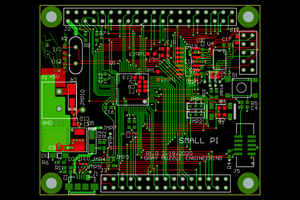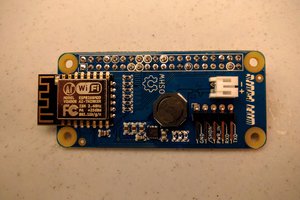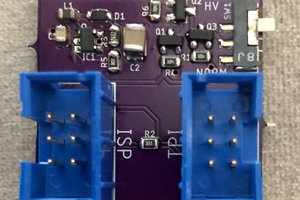In principle, all it takes to use the Pi SPI bus for AVR programming is just hooking it up to the target, but this limits your programmer to 3.3v levels and offers no protection to the Pi. This hat adds level shifting for the target to support just about any reasonable voltage as well as supplying target power at either 5v or 3.3v through an AP2331 hot-pluggable protection chip.
The level shifting is embodied in two tri-state buffer chips. One is a single chip powered by the Pi 3.3 volt bus that shifts the sole incoming signal (MISO). The other chip is a 4 way (of which 3 are used) to level-shift MOSI and SCK. The third section is used to gate the !RESET signal. Since the !RESET signal itself is also used to gate all of the signals, we can just short the input of that gate to ground. The result is a !RESET output that is either high impedance of low, which is exactly what we want.
We take 5 volts and 3.3 volts from the GPIO connector and switch them with a 3 position switch to the input of the AP2331. The output is the target power, which is used to power the output buffer chip and the target itself. If no target power is supplied, then the target will power the output buffer chip.
Depending on software support, it can be desirable to either use the !SPI_CE0 pin or a separate GPIO pin for the !RESET trigger. There's a solder jumper on the back of the board to allow picking either GPIO 25 or 8 (!SPI_CE0). By default, 25 is selected, as the default linuxspi code in avrdude wants a separate pin.
 Nick Sayer
Nick Sayer
 Bharbour
Bharbour
 ajlitt
ajlitt

 Pep3175
Pep3175